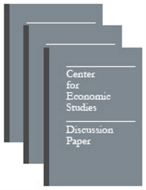
An official website of the United States government
Here’s how you know
Official websites use .gov
A .gov website belongs to an official government organization in the United States.
Secure .gov websites use HTTPS
A lock (
) or https:// means you’ve safely connected to the .gov website. Share sensitive information only on official, secure websites.
-
//
- Census.gov /
- Library /
- Census Working Papers /
- Agglomeration, Enterprise Size, and Productivity
Agglomeration, Enterprise Size, and Productivity
Agglomeration, Enterprise Size, and Productivity
Abstract
Much research on agglomeration economies, and particularly recent work that builds on Marshall’s concept of the industrial district, postulates that benefits derived from proximity between businesses are strongest for small enterprises (Humphrey 1995, Sweeney and Feser 1998). With internal economies a function of the shape of the average cost curve and level of production, and external economies in shifts of that curve, a small firm enjoying external economies characteristic of industrial districts (or complexes or simply urbanized areas) may face the same average costs as the larger firm producing a higher volume of output (Oughton and Whittam 1997; Carlsson 1996; Humphrey 1995). Thus we observe the seeming paradox of large firms that enjoy internal economies of scale co-existing with smaller enterprises that should, by all accounts, be operating below minimum efficient scale. With the Birch-inspired debate on the relative job- and innovation-generating capacity of small and large firms abating (Ettlinger 1997), research on the small firm sector has shifted to an examination of the business strategies and sources of competitiveness of small enterprises (e.g., Pratten 1991, Nooteboom 1993). Technological external scale economies are a key feature of this research (Oughton and Whittam 1997).
Others in Series
Working Paper
Working Paper
Working Paper
Share
Related Information
Some content on this site is available in several different electronic formats. Some of the files may require a plug-in or additional software to view.
 Yes
Yes
 No
NoComments or suggestions?


Top

